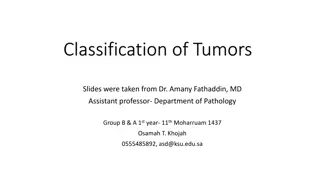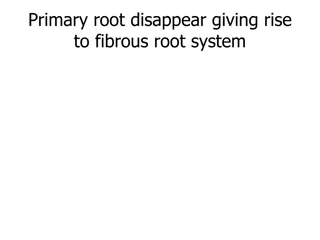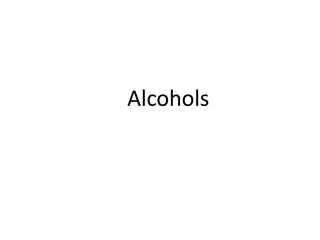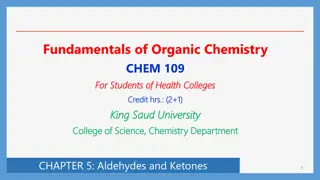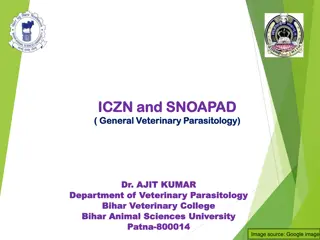Characteristics and Nomenclature of Campylobacter
Discovered by Theodor Escherich in 1886, Campylobacter is a Gram-negative curved rod bacterium that belongs to the Campylobacteraceae family. It is highly motile, microaerobic, and susceptible to killing. The nomenclature includes various species such as C. jejuni and C. coli. Campylobacter's growth and survival characteristics, including its pathogenicity and serotyping methods, are crucial in understanding its behavior. Isolation rates of Campylobacter from different sources like poultry, cattle, and seafood shed light on its prevalence. Explore the diverse aspects of Campylobacter to enhance your knowledge in microbiology.
Download Presentation

Please find below an Image/Link to download the presentation.
The content on the website is provided AS IS for your information and personal use only. It may not be sold, licensed, or shared on other websites without obtaining consent from the author.If you encounter any issues during the download, it is possible that the publisher has removed the file from their server.
You are allowed to download the files provided on this website for personal or commercial use, subject to the condition that they are used lawfully. All files are the property of their respective owners.
The content on the website is provided AS IS for your information and personal use only. It may not be sold, licensed, or shared on other websites without obtaining consent from the author.
E N D
Presentation Transcript
Characteristics of Campylobacter 3 Discovered by Theodor Escherich in 1886 Campylobacteraceae family Gram negative curved rod, up to 5-8 m in length Microaerobic; some require high H2 Non-spore-forming Highly motile (corkscrew motility) Highly susceptible to killing ~800,000 cases (3rd) Surface lipooligosaccharides (LOS) Poorly understood Image from Wikipedia
Nomenclature of Campylobacter 4 Campylobacteraceae Campylobacter (17 species) Arcobacter (6 species) Sulfurospirillum (6 species) C. jejuni subsp. jejuni and C. coli of most concern
Growth and survival characteristics 5 Why is this a pathogen again? Temperature range for growth and survival Thermotolerant (C. jejuni), mesophilic (C. fetus) D55C ~2.5-6.5 min, D60C < 1 min pH range Oxygen sensitive (especially at low cell densities) Survival outside host is temperature dependent
Growth and survival characteristics 6 Survival outside of the host C. jejuni Pasteurized milk (25d/4C, 3d/25C) Stream water (1-4 weeks/4C, 4d/25C) Sensitive to oxygen Grows in atmospheric conditions only in high cell densities Catalases/superoxide dismutases Very tricky to work with in the lab Transport back to the lab
Serotyping 7 Lior method (1982) Antisera to formaldehyde killed Campylobacter At least 21 different Lior groups Penner method (1980) Antibodies developed to the LOS layer At least 23 different Penner types Heat stable, given HS designation (ie. HS:1, HS:2) Can be used as first step of characterization during an outbreak investigation
Isolation rate (all Campylobacter) 8 Species/source Average % positive Chicken 33-53% Turkey 56% Duck, goose, pheasant 32% Cattle 45% Swine 27% Sheep, lamb, goats 33% Seafood 16% http://news.psu.edu/story/281316/2013/07/11/research/whole-chickens-farmers-markets-may-have-more-pathogenic-bacteria Miller and Mandrell, 2005
Reservoirs Species Reservoir Frequency among Campy Human disease Animal disease 9 C. jejuni subsp. jejuni Cattle, birds, pets Common (77%) diarrhea, GBS, RA diarrhea, abortion C. coli Pigs, birds, poultry, cats Common (11%) diarrhea C. upsaliensis Domestic pets, poultry Uncommon (4.5%) diarrhea diarrhea C. consisus Humans Uncommon (1.4%) periodontal C.fetus subsp. fetus Cattle, sheep Uncommon (0.6%) abortion, systemic illness abortion C. lari Birds, dogs Uncommon (0.2%) diarrhea, urinary tract C. hydrointestinalis Cattle, pigs, deer Uncommon (0.1%) diarrhea enteritis
Seasonality 10
Disease 11 About 80% believed to be foodborne 3rd most common bacterial cause (~800,000 cases) Infectious dose ~500-1000 cfu Mostly sporadic (vs. outbreak) Incubation period Generic disease Malaise, fever, abdominal pain, diarrhea Self-limiting May continue to shed organisms up to 2-3 weeks However .
Severe complications 12 Guillain-Barre syndrome Rare, ~100-1000 cases Ascending paralysis (most cases) muscle weakness/pain difficulty walking vision/speech Autoimmune disease LOS HS:19 (especially) antigenically related to GM1 and GD1a (component of motor neurons) No known cure, only alleviation of symptoms; lifetime disease More common in men and women between 30-50 Reactive arthritis Swelling of joints, urethra, eyes More common in teenagers and men under 40 No known cure; lifetime disease
Outbreaks 13 http://wwwn.cdc.gov/foodborneoutbreaks/Default. aspx# http://www.marlerclark.com/news_events See Outbreak Database at bottom of website http://www.pritzkerlaw.com/food-litigation/
Control 14 On farm Good sanitary practices; minimize spread among animals and birds
Control (Recommendations of FSIS) 15 On farm Good sanitary practices; minimize spread among animals and birds Plant Minimize cross-contamination Pasteurize Individual Recognize prevalence Clean (hands, cutting boards, etc), separate, cook, chill (pretty much universal)
On the horizon: Arcobacter 16 More recently recognized, emerging foodborne pathogen Related but different from Campylobacter A. butzleri, A. cryaerophilus most common A. butzleri is 4thmost common Campylobacter-like disease (3.5% of cases); A. cryaerophilus isolated about 0.5% of cases Disease Lots of unknowns


